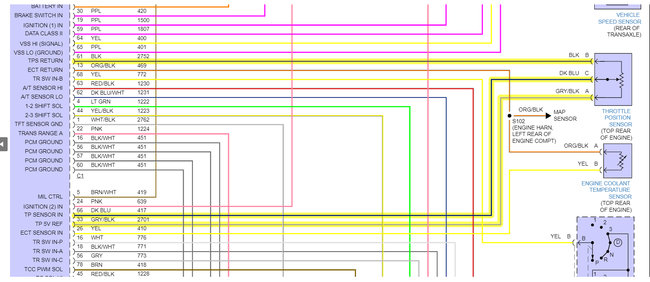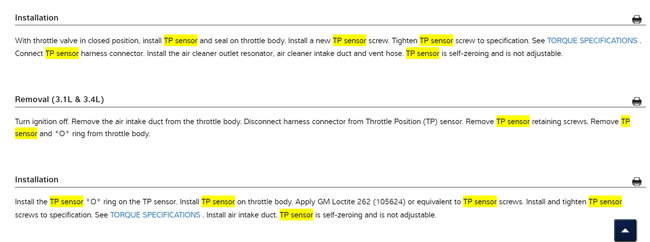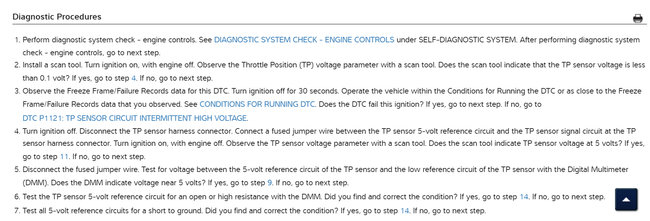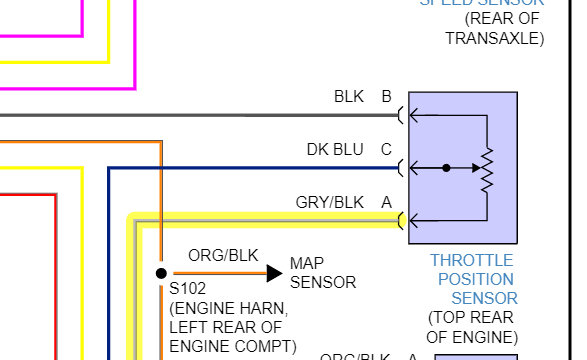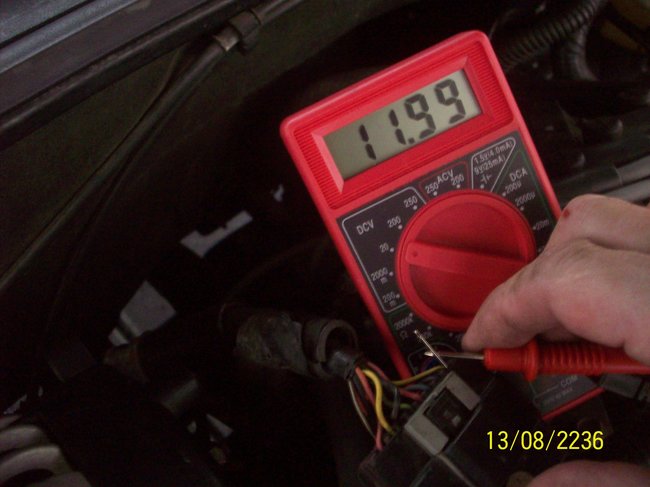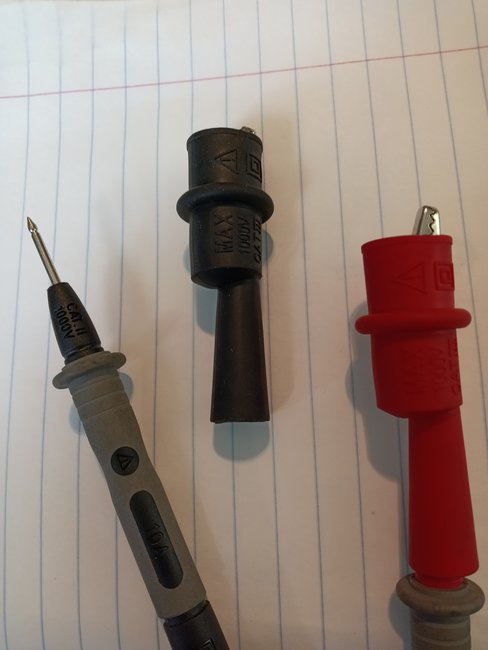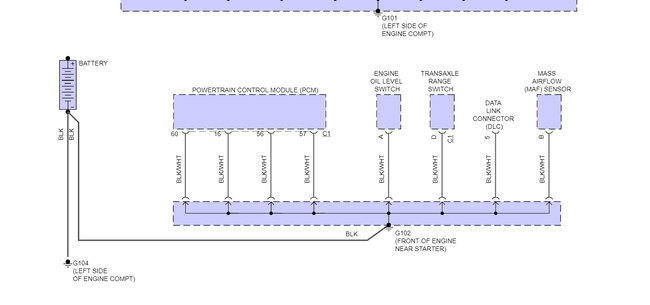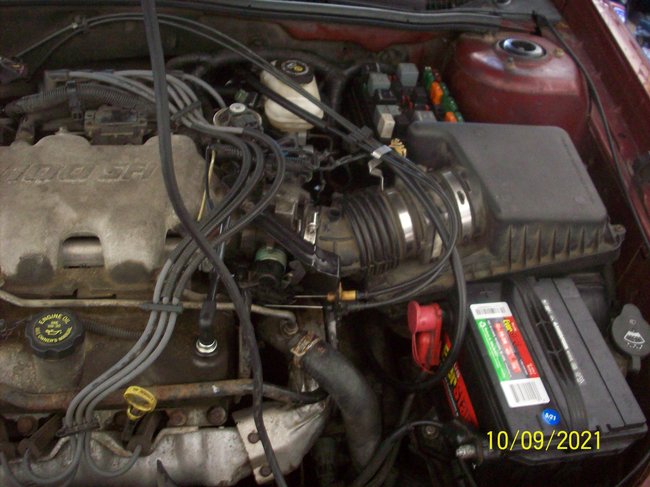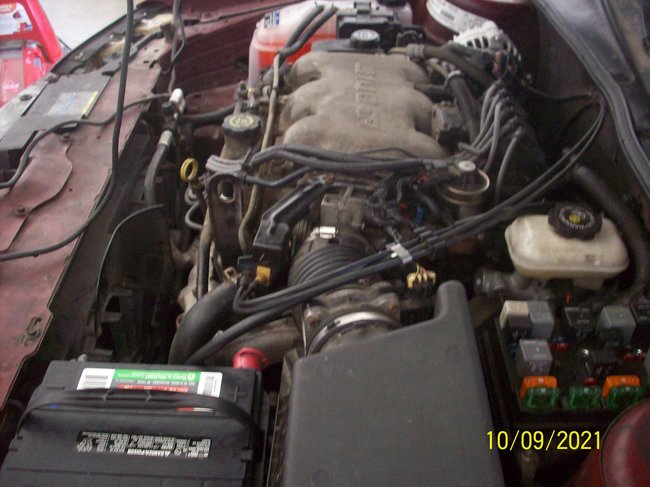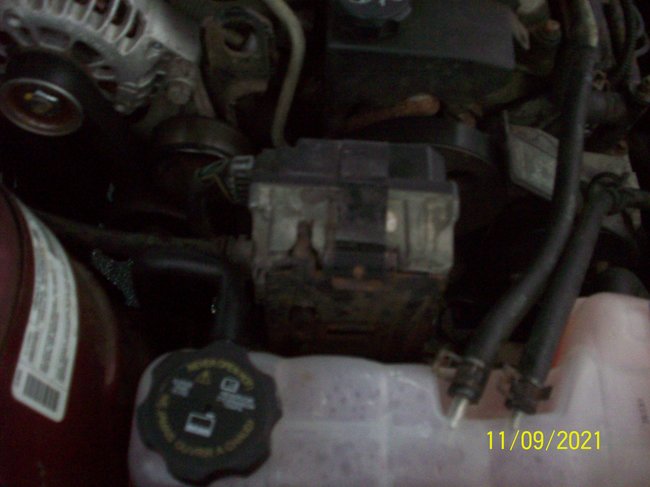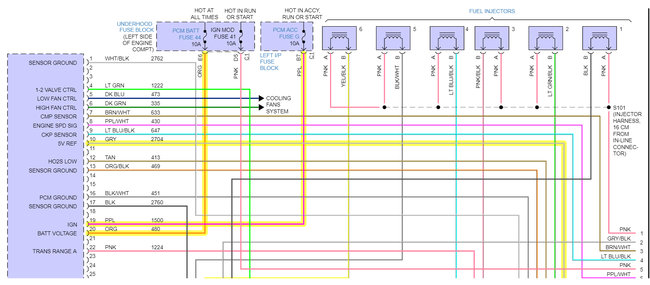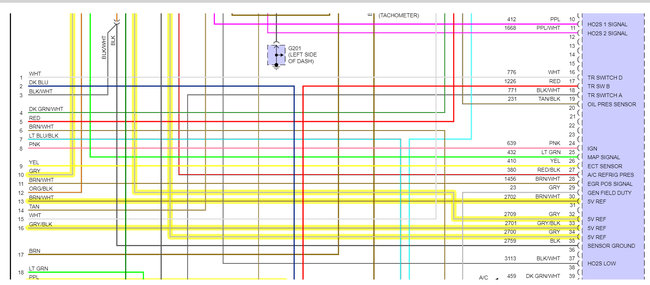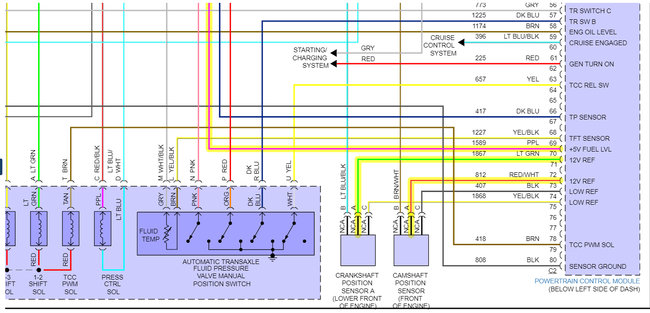Okay, thanks for the pictures. Well we've found the real issue at least. Its strange that you're even getting any reading on the signal wire at all. I think you're going to have to check that 5 volt reference wire while this problem is occurring. My head is telling me you may have another sensor that is shorted out and pulling the 5 volts low or a corroded connection somewhere. The ECM needs a full 12volts to operate. I'm not sure its a bad ground.
The reason for this is, if you had a bad ground wire, the signal would be high because its not being pulled to ground, but since its a low signal, either that 5 volts is low, or power to the ECM/PCM is low. This is definitely not an average problem. I'm glad you've been able to do these tests so far. This is getting to be some tough diagnostics.
So the next step here is going to be checking the 5 volt wire at the sensor when you're not getting a reaction out of the TPS. I don't know if this is a problem that is always happening or if it is intermittent. Since you did have a reading at one point during all this.
If you start the car, does the throttle respond while its running? Even if it has a high idle?
I would even check that your battery has a good charge, because at this point with all the testing with just the key on, the battery is going to be low on charge. So start the car and let the battery charge up before anymore testing. Make sure at the alternator post to battery negative its charging at least 13.5-14volts.
I will be really embarrassed if this turns out to be a charging issue.
So next steps, charge up the battery, check that 5volts while the problem is happening, And is this the Base Malibu model or the LS model?
I'm giving you the power diagrams to check the ECM. So what you'll have to do on these, since there might be more some wires that are the same color, is just make sure the wire you checking has the same color wires next to it as on the diagram.
So the 1st Diagram is the battery voltage wire is an "Orange" wire next to it a Pink wire, and a Purple wire on the other side. The Orange wire should be battery voltage all the time (12v), And the Purple wire is Battery Voltage while the key is in the On Position (12v).
These are all highlighted in yellow.
The grey wire above those, you'll see, is a 5 Volt reference wire. Check all these after the battery is good and charged up.
The 2nd diagram is all 5 volt tests, Key On is fine for these.
The 3rd diagram is one 5volt ref, and two 12v ref.
I'm assuming you know where the ECM/PCM is because you said you traced a wire back to it, which is great by the way.
Just really make sure that battery is good, its really important that its fully charged for anymore testing. Let me know what you find.
And one thing, these tests we're doing are not loaded circuit tests. Meaning we're not stressing the circuits right now, which is what I would be doing in a shop. But for right now, just do these basic checks and we'll keep going from there. Doing these tests while the car is running would be even better, but if you're worried about the idle being all over the place I understand.
If everything checks out, check the wires while doing some wiggle tests on the harness, sometimes while moving the harness around a little, a problem will reveal itself.
In your pictures, the 3rd one you asked about, looks like an ignition module for the coils. You have spark, so go right to the ECM now. Its labeled as just below the left side of the dashboard, so driver side. Its going to have a ton or wires running to it like in the diagrams. I know there is 3 of them, but there just broken up that way. All the pictures run to the same ECM.
I really hope you didn't just get a bad part from the auto store. Its been happening a lot more lately. Just junk brand new parts.
Just wanted to throw more to think about, sorry for this, but while tracing wires back from the TPS to the ECM, check as much of the wiring as you possibly can. I know you've got an odd situation here. But any contact points where the harness touches any part of the engine or frame, where it can rub threw after years of vibration and movement.
Images (Click to make bigger)
Sunday, September 12th, 2021 AT 9:33 AM
